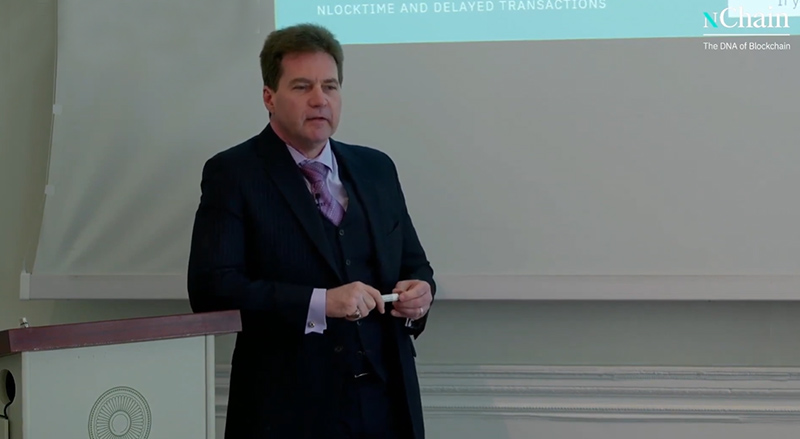The Bitcoin Masterclass (London) Day 1
Dr Craig S. Wright, Chief Scientist at nChain, held another edition of his Bitcoin Masterclass series at an exclusive venue in London in April. The Masterclass course forms part of a monthly series aimed at helping attendees understand the fundamentals of Bitcoin and the technology behind it.
The Bitcoin Masterclass series will give you a comprehensive overview of Bitcoin’s history, theory and design. Wright discussed the future of Bitcoin and the unbounded scalability of nChain’s blockchain solutions, with potential use cases across several industries.
In the first session on day one, Wright discussed the differences between nLockTime on Bitcoin and some of the alternative solutions offered by BTC – and why they are typically inferior. He also discussed the importance of having maximum flexibility when creating time-locked transactions on Bitcoin.
What is nLockTime?
nLockTime is a feature in the Bitcoin protocol that allows you to set a specific time or block height in the future, before which a transaction will not be considered valid by the network. It is essentially a way to delay the inclusion of a transaction in the blockchain until a certain condition is met, such as a specific date or a certain block height.
With nLockTime, you can create time-locked transactions, which means they cannot be added to the blockchain until the specified time has passed. This feature is useful for various purposes, including creating conditional payments, enabling time-sensitive contracts, and enhancing the flexibility of transaction handling.
By using nLockTime, you can enforce certain conditions on a transaction, ensuring that it is only executed when the predefined criteria are met.
nLockTime vs CLTV
Wright began the session by discussing the difference between nLockTime and CheckLockTimeVerify (CLTV) which was added to the BTC protocol at a later date.
He noted that with nLocktime, a transaction you create remains unaccepted by nodes and is effectively non-existent on the blockchain until the specified time is reached. On the other hand, CLTV allows the transaction to be processed on the blockchain upon creation, but its UTXOs (Unspent Transaction Outputs) remain blocked until the specified time elapses.
Wright noted that these two approaches are fundamentally different. Firstly, there’s a difference in visibility. With nLockTime, the transaction remains concealed until its activation time, while with CLTV, the existence of the transaction is visible on the blockchain from the outset.
Secondly, there is a difference in flexibility. Dr Wright noted that a CLTV transaction is irreversible once created. This lack of reversibility may not be ideal when dealing with payments scheduled months or years in advance, as circumstances might change, and parties may need the flexibility to modify the terms.
He added that contracts can be renegotiated, but in certain cases, a transaction might need to be made where the precise full amount isn’t yet finalised or could be contingent on a future event.
Using nLockTime and time-locked transactions
Wright also discussed the different ways that nLockTime and time-locked transactions can be used by businesses and governments, including tokenised land registries, tokenising other assets, and creating most types of financial contracts.
He added that with nLocktime, using Script allows you to establish specific conditions within a contract that must be satisfied before the payment can be sent. These conditions are adaptable and can be modified or extended as needed.
